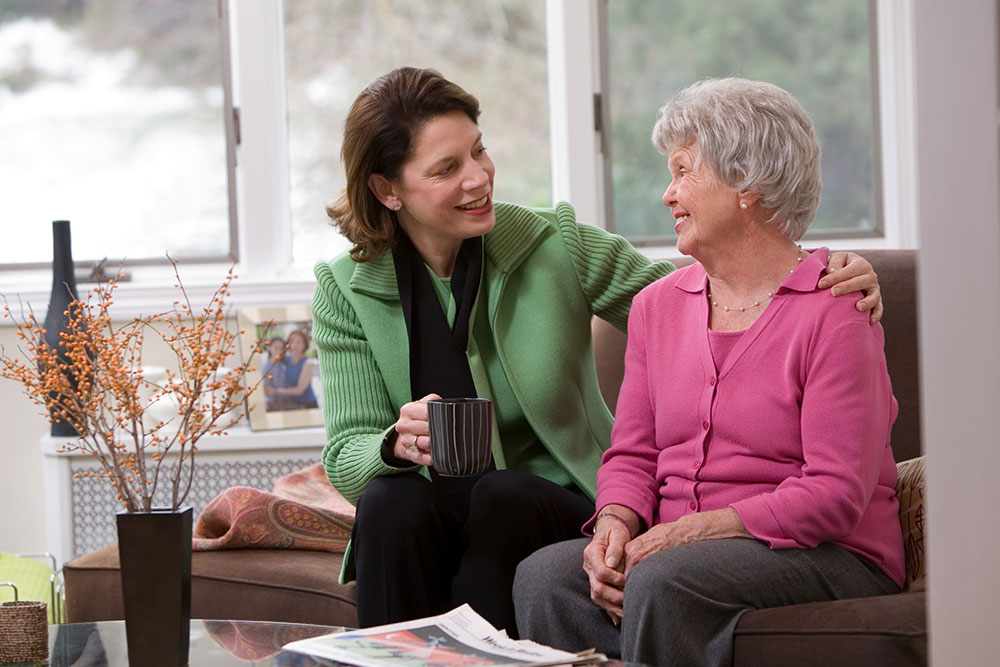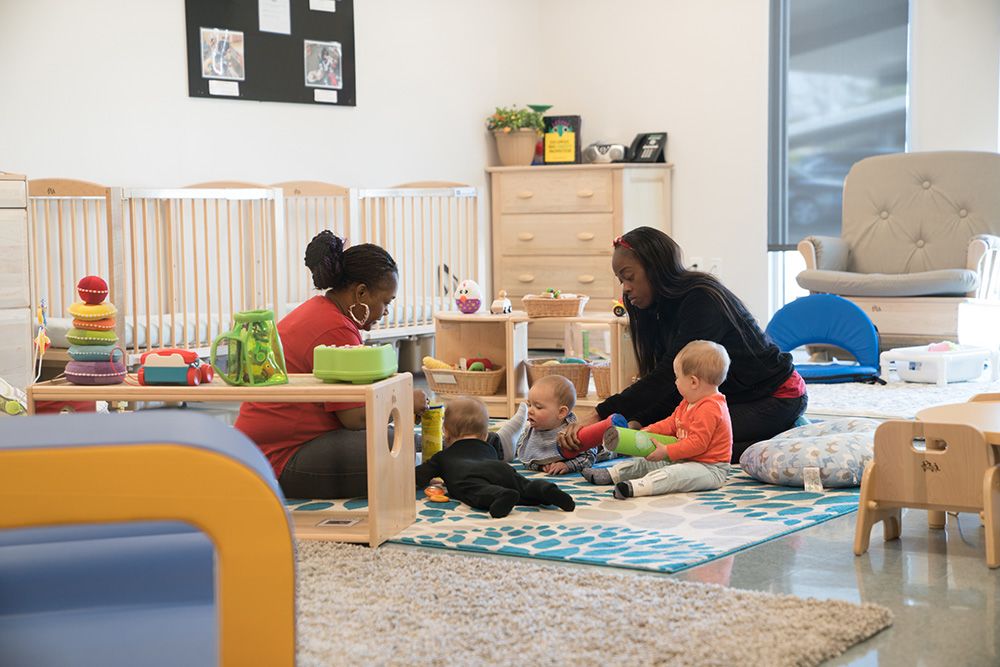Last year, the National Alliance for Caregiving and the AARP released its latest Caregiving in the US report.
Among the findings was that 34 million people in this country currently care for an aging adult, many putting in the equivalent hours of a part-time job...or more.
This is a substantial figure, particularly in light of the fact that more than half of these people are also wage earners, many of them working demanding full-time jobs.
What's not fully illuminated in the report is the number of hours people dedicate to finding the resources they need. As with any of life's biggest challenges, elder responsibilities are not limited to the care itself, but knowing where and how to look for it. Finding someone you feel good about is the source of endless hours of searching and many sleepless nights. A quick search for eldercare comes up with 32 million (that's 32 and six zeroes) results. Culling the list could itself be a full-time job.
Yet in many workforces, the challenges - and costs - can go unappreciated. Unlike parenting, caring for elder relatives is a quiet job; most people don't go out of their way to talk about it; many hide it entirely. But the silent impacts on people and businesses are unmistakable, adding up in absences and lost productivity.
But the downfall of EAPs is that they fall short when urgent situations arise. Consider the experience of a Texas employee who got a surprise phone call one morning with news that her ailing father would need extended care roughly 100 miles away. Advice alone would do little for such an acute problem.
"Dad was going to need my help for the foreseeable future," she told us, "but I couldn't just stop working."
Complicating the situation was the fact that she also had a young daughter at home. The daunting job of figuring it out herself - even with an EAP -- would have likely required the woman to take time off work not just to care for her father, but also to line up caregivers for the days she would be absent. She was more than a little relieved to learn that the elder care provided by her employer not only subsidized the cost of her father's care, but took care of finding and sending a provider to her father's house. All she had to do was make a phone call.
And creators of the Back-Up Care Advantage program, the program used by Viola, the Texas employee, say it was created in response to a clear need.
"Elder care isn't just a personal problem, it's a business problem," says Dan Henry, CHRO of Bright Horizons, the company that offers the program Viola used. "Smart employers are looking at it exactly that way."
And it promises to fill growing gaps for employers. The caregiving study reported that six in ten employees said that they had to pare back work hours in order to meet a relative's needs. And in 2011, a Gallup study reported that employees with elder care responsibilities were missing an average of six days per year. Such absences portend substantial costs, with a recent workforce article citing absences and tardiness costing U.S. employers an estimated $38 billion in lost productivity.
Equally of note, it's not just Boomers or Gen X who are feeling the strain. Roughly a quarter of these caregivers are Millennials, indicating that such programs will have positive impact across a workforce.
The message is that what's needed is a comprehensive employer benefits program that covers more ground than an EAP.
Ideally, says Dan, the programs returning the most value "will offer both guidance to employees about how to sift through all the options," he says, "and also actual, tangible care."
Among the findings was that 34 million people in this country currently care for an aging adult, many putting in the equivalent hours of a part-time job...or more.
This is a substantial figure, particularly in light of the fact that more than half of these people are also wage earners, many of them working demanding full-time jobs.
What's not fully illuminated in the report is the number of hours people dedicate to finding the resources they need. As with any of life's biggest challenges, elder responsibilities are not limited to the care itself, but knowing where and how to look for it. Finding someone you feel good about is the source of endless hours of searching and many sleepless nights. A quick search for eldercare comes up with 32 million (that's 32 and six zeroes) results. Culling the list could itself be a full-time job.
Yet in many workforces, the challenges - and costs - can go unappreciated. Unlike parenting, caring for elder relatives is a quiet job; most people don't go out of their way to talk about it; many hide it entirely. But the silent impacts on people and businesses are unmistakable, adding up in absences and lost productivity.
The Gap Between Elder Care And EAPs
Employee Assistance Programs (EAPs) attempt to fill the hole by pointing people to yet more resources. And in fact, even these are in short supply, with only a small percentage of employees reporting access.But the downfall of EAPs is that they fall short when urgent situations arise. Consider the experience of a Texas employee who got a surprise phone call one morning with news that her ailing father would need extended care roughly 100 miles away. Advice alone would do little for such an acute problem.
"Dad was going to need my help for the foreseeable future," she told us, "but I couldn't just stop working."
Complicating the situation was the fact that she also had a young daughter at home. The daunting job of figuring it out herself - even with an EAP -- would have likely required the woman to take time off work not just to care for her father, but also to line up caregivers for the days she would be absent. She was more than a little relieved to learn that the elder care provided by her employer not only subsidized the cost of her father's care, but took care of finding and sending a provider to her father's house. All she had to do was make a phone call.
Offering Guidance and Access to Tangible Care
That EAPs struggle to fill today's need is not a surprise. A study by Magellan Health notes that many of these programs were created in the 1990s. "While small upgrades and patches can help older EAPs," a member of the Magellan team told HR Dive, "a new era requires a new approach."And creators of the Back-Up Care Advantage program, the program used by Viola, the Texas employee, say it was created in response to a clear need.
"Elder care isn't just a personal problem, it's a business problem," says Dan Henry, CHRO of Bright Horizons, the company that offers the program Viola used. "Smart employers are looking at it exactly that way."
And it promises to fill growing gaps for employers. The caregiving study reported that six in ten employees said that they had to pare back work hours in order to meet a relative's needs. And in 2011, a Gallup study reported that employees with elder care responsibilities were missing an average of six days per year. Such absences portend substantial costs, with a recent workforce article citing absences and tardiness costing U.S. employers an estimated $38 billion in lost productivity.
Equally of note, it's not just Boomers or Gen X who are feeling the strain. Roughly a quarter of these caregivers are Millennials, indicating that such programs will have positive impact across a workforce.
Filling the Need With Employer-Sponsored Elder Care
Dan says while care is the critical centerpiece, effective programs will have to be comprehensive to meet all employees' needs. In addition to single-call care, the Bright Horizons' program can also include access to a self-serve database. And because expert resources are also sometimes essential, an additional service guides employees on sifting through the options for longer-term arrangements.The message is that what's needed is a comprehensive employer benefits program that covers more ground than an EAP.
Ideally, says Dan, the programs returning the most value "will offer both guidance to employees about how to sift through all the options," he says, "and also actual, tangible care."





